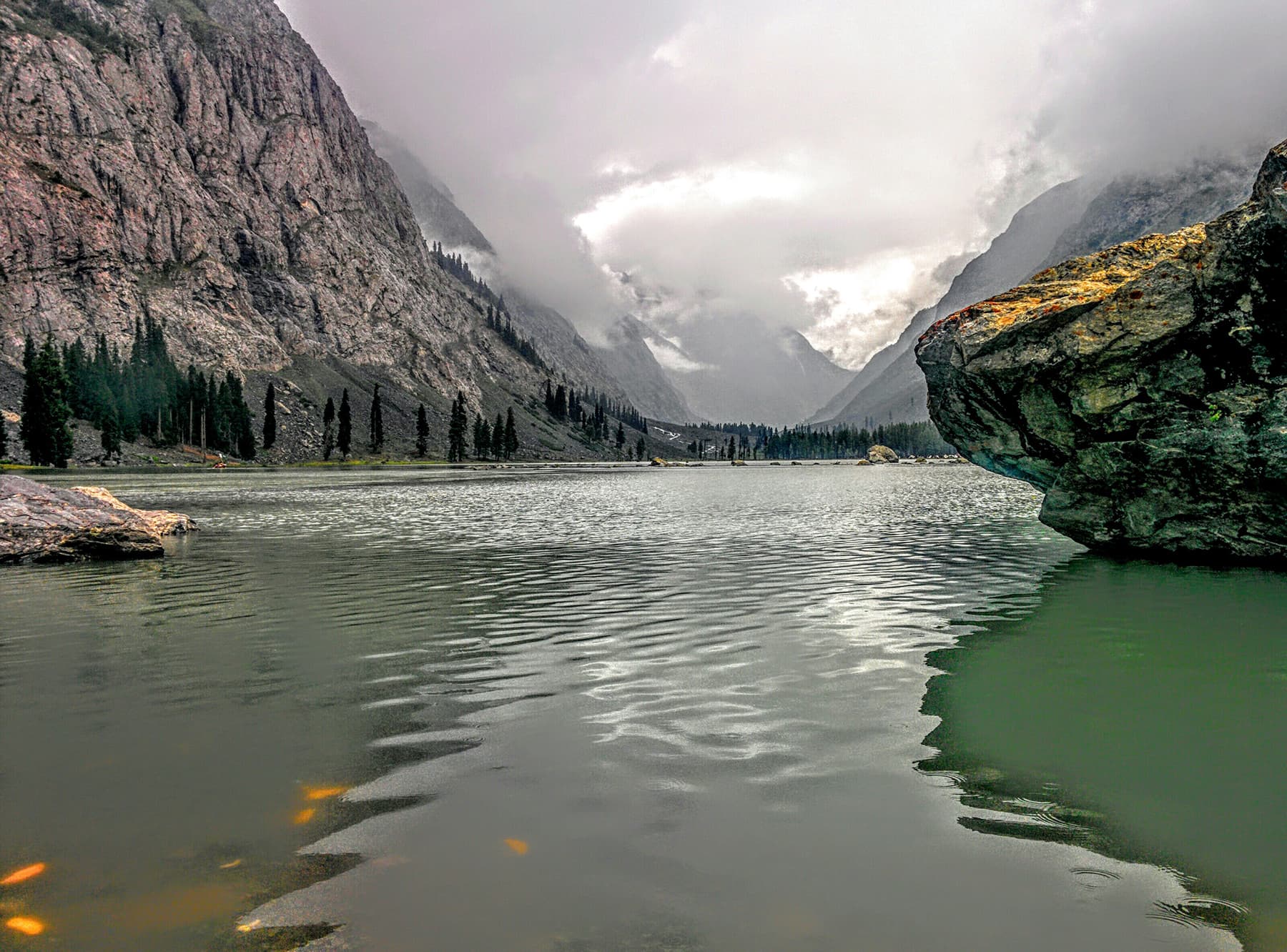Just lush green grass, gushing streams, colourful flowers and splendid mountains.
This Eidul Fitr, I had the pleasure of visiting one of Swat’s most scenic towns: Kalam. A true gem of nature, words cannot truly describe the breathtaking beauty of this area, its gushing streams and splendid mountains. With the Taliban now long gone, Kalam is now resurging as another one of Pakistan's tourist spots.
In terms of altitude, Kalam is close to Murree, but it seems far higher than the other popular hill station because you're surrounded by tall peaks as far as the eye can see. The most prominent peak is Falak Sar (5,918m), capped by pristine white snow at the top. The valley is flooded with lush greenery, so lush that all I felt like doing here was lie down in the grass and gaze around.
One distinct feature of Kalam is the abundance of streams and waterfalls here. The hotel where my family and I stayed, the Walnut Heights, is situated on a hill beyond the main bazaar, right next to a stream that flows down into the lower part of the town.
Every night, I lay on a sofa with my eyes closed, just giving in to the sense of tranquillity from the sound of water gushing down the hill.
But of course, it would be a waste to make a 13-hour drive from Islamabad only to stay indoors. The air is so clean, it would be criminal not to step out and fill my lungs with its crispness. Alongside my family and a hotel employee named Waris Khan, I hiked up the hill for around half-a-day. It was lovely; just an overwhelming of grass and colourful flowers, with an excellent vantage point to view the valley from.
The most fun was had in visiting Lake Mahodand, which is roughly 40km from Kalam in the Ushu District of Swat. We went in an open-air jeep that the hotel had arranged. While bumpy and often uncomfortable, I wouldn’t have gone any other way; the lack of windows and a roof meant I could see all the glaciers and waterfalls which came in the way. Falak Sar was also nearby, humbling us with her brilliance as we got nearer and nearer to her.
Mahodand itself was a real treat. Blue waters, graceful mountains and gorgeous meadows gave it the allure of a place one discovers by accident. But in reality, it is not so secret. The day I went, other tourists were there in abundance. Many just stood around and enjoyed the sight they were witnessing, while others were busy riding horses and boats.
The presence of other tourists was slightly irksome because Mahodand is one of those places that you want to claim as your own; a private sanctuary where you can lie down and relax without a single care in the world.
Yet, the rush was also pleasing; it was an indication that Swat was back to its former glory as a tourist destination following the disastrous Taliban period.
When I told friends and family I was going to Kalam, the first question I was asked was, “Waahan pe Taliban ka masla toh nahi hai?” Well, no, turns out koi masla nahi hai.
The army’s operation in Swat, Operation Rah-e-Rast, ended successfully six years ago. Army check-posts can be found frequently throughout the Swat Valley, and soldiers go about doing their rounds on jeeps every so often. The region is now safe and stable, though the effects of the Taliban era are still felt by its people.
When I talked to a 10-grader from Mingora named Manzoor, I developed a better understanding of the terrorist organisation’s rule, and the horror and hopelessness it had brought for the people of Swat.
Life was at a standstill. People were forbidden from venturing too far from their homes.
Violating any of the draconian laws in place led to public beatings. Girls were not allowed to go to school. And violence was the norm. My heart sank when Manzoor told me that he saw bombs go off on a regular basis, a sight that to this day traumatises him.
The scars of yesterday must not be forgotten. That said, memories of a bygone era take away from the pleasure Kalam brings.
While I am now back in Karachi and to the banality of a regular schedule, I am clinging to my fond memories of the serene Swat valley. The heart keeps asking the mind, will we go back soon?




















